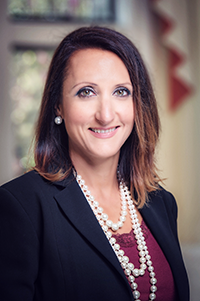Experts Continue to Debate if Addyi Benefits Outweigh Risks
Abstract
Women with hypoactive sexual desire disorder who took flibanserin reported an average of 0.49 additional satisfying sexual experience per month compared with those who took placebo, according to an analysis of pooled data from eight randomized trials.
In August 2015, flibanserin (Addyi) became the first drug to be approved by the Food and Drug Administration (FDA) for the treatment of hypoactive sexual desire disorder (HSDD) in premenopausal women (Psychiatric News, September 18). The approval followed multiple rejections spanning more than 15 years and heated debates within and outside of the medical community. After its approval, the controversies surrounding the drug have continued.
In a systematic review published in the February 29 JAMA Internal Medicine, Loes Jaspers, M.D., and colleagues in the Netherlands and Belgium analyzed pooled data from five published and three unpublished randomized trials, in which flibanserin was compared with placebo.
Nearly 6,000 women took part in the eight trials included in the analysis, including two studies conducted in postmenopausal women and six in premenopausal women. (The FDA’s approval of flibanserin was limited to premenopausal women and based on three phase 3 trials.)
One of the primary efficacy outcomes measured in these studies was increased number of satisfying sexual events (SSEs) per month from baseline. At the end of the studies, the flibanserin group reported an average of 0.49 additional SSE per month compared with the placebo group. The study participants had a mean of 2.5 SSEs per month at baseline.
Another efficacy outcome was the score of sexual desire recorded by patients in an electronic diary. At baseline, the mean score was 11.5 on a scale of 0 to 84. The average difference in sexual desire score change from baseline between flibanserin and placebo was 1.63. Self-reported desire was also measured using the Female Sexual Function Index, a scale based on recall for the past four weeks. The baseline mean was 1.8 on a scale of 1.2 to 6.0. The average difference between flibanserin and placebo in the score change from baseline was 0.27.
The review highlighted several safety concerns related to the use of flibanserin: participants on the medication had four times the risk of dizziness and sleepiness, over twice the risk of nausea, and 1.6 times the risk of fatigue compared with those on placebo.
The authors also criticized the quality of the flibanserin studies. The drop-out rates were high, and women with a wide range of concurrent diseases and medications were excluded. Additionally, the study participants, who were on average overweight with relatively high sexual function at baseline, may not represent the larger population of patients with HSDD, Jaspers and colleagues noted.
“It has been suggested that women with HSDD would benefit most from an integrative approach, including medical, psychiatric, psychological, couple-relationship, and sociocultural domains: the biopsychosocial model,” Jaspers and colleagues concluded. “Before flibanserin can be recommended in guidelines and clinical practice, future studies should include women from diverse populations, particularly women with (a history of) somatic and psychological comorbidities, medication use, and surgical menopause.”
FDA Imposes Multiple Safeguards
Flibanserin’s road to FDA approval was almost as complicated as interpreting its efficacy and safety profiles. In the early 2000s, the German company Boehringer Ingelheim conducted two phase 3 trials and submitted the first application to the FDA. In 2010, the application was rejected. The company conducted a third phase 3 trial and re-applied, but was turned down again. Subsequently, Sprout Pharmaceuticals bought the rights to the drug and filed an application for a third time. The FDA approved the drug after the advisory committee voted 18-6 in its favor. (Shortly after the approval of flibanserin, Sprout Pharmaceuticals was bought by Valeant Pharmaceuticals for $1 billion.)
In an article published in the January 14 New England Journal of Medicine, FDA reviewers acknowledged safety concerns about flibanserin. In addition to the risks of dropping blood pressure, fainting, drowsiness, and dizziness, which may be exacerbated by alcohol use, flibanserin interacts with other medications metabolized by the group of liver enzymes known as cytochrome P450 3A4 (CYP3A4). These medications—which include erythromycin, clarithromycin, ketoconazole, antiviral drugs—and grapefruit juice can reduce the capacity of hepatic enzymes and cause an unintended rise in the amount of flibanserin in the body.
Flibanserin’s prescribing information contains boxed warnings against its use with alcohol, medications, and foods that inhibit CYP3A4 enzymes. Women with impaired liver function should avoid using flibanserin. In addition, flibanserin can only be prescribed and dispensed by health care professionals who are registered in a special program set up by Sprout Pharmaceuticals. To enroll in the program, prescribers and pharmacies must complete a short online training and register their information.
If HSDD symptoms do not improve after eight weeks of flibanserin, the FDA recommends that patients stop taking the medication.
Clinical Opinions on Addyi Differ

Leonard Derogatis, Ph.D., says he believes “selective reporting and commentary have attempted to trivialize the effectiveness of flibanserin.”
Similar to the opinions expressed by the authors of the systematic review appearing in JAMA Internal Medicine, some clinicians remain skeptical of the value of flibanserin. “I do not think the drug should have been approved,” Cynthia Graham, Ph.D., told Psychiatric News. Graham is the editor of the Journal of Sex Research and a professor of sexual and reproductive health in the psychology department at University of Southamptom in the United Kingdom. She cited “minimal efficacy” and “major concerns about side effects and interactions with other drugs” as the basis of her opinion.
However, Leonard Derogatis, Ph.D., believes that “flibanserin is a safe and effective treatment for … acquired HSDD in premenopausal women.” He told Psychiatric News that the adverse events seen in flibanserin studies “were well within the acceptable window … with CNS drugs, and the prevalence of syncope, much ballyhooed in selective press reports, was 0.5 percent [compared with] 0.3 percent in patients on placebo.”
Derogatis is the director of the Maryland Center for Sexual Health and an associate professor of psychiatry at Johns Hopkins University School of Medicine. He was an investigator on one of flibanserin clinical trials that was included in the review by Jaspers and colleagues.

Lori Brotto, Ph.D., says she questions whether the “marginal increase” in SSE per month that patients on flibanserin report “justifies the significant side effects of the medication.”
“Very selective reporting and commentary have attempted to trivialize the effectiveness of flibanserin by focusing on the result of one additional SSE per month …, [but these reports] fail to recognize that not all patients respond to a given drug,” Derogatis noted. For the patients who responded to the medication, the increase in SSEs was “much more dramatic” and sexual desire was “returned to normal range.” He criticized the systematic review by Jaspers and colleagues as being “highly selective” and “misleading.”
Lori Brotto, Ph.D., a psychologist and professor of obstetrics and gynecology at the University of British Columbia told Psychiatric News that while she is in favor of a medication that treats low sexual desire in women, she questions if the “marginal increase” in SSE per month “justifies the significant side effects of the medication.” She pointed out that the drug’s contraindication with alcohol is a major obstacle to its practical use.
Determining the patients who might benefit most from the medication might present a challenge for clinicians as well. In 2013, DSM-5 merged HSDD and female sexual arousal disorder into one diagnosis of female sexual interest/arousal disorder (FSIAD).
“FSIAD is a polythetic diagnosis, meaning that women need any 3 of 6 symptoms to meet the [diagnostic] criteria,” Brotto said. “Criteria 1 and 2 from FSIAD map to HSDD.” For patients who meet the criteria of FSIAD but not criteria 1 and 2, “we really do not know how they will respond to flibanserin,” she said. ■



